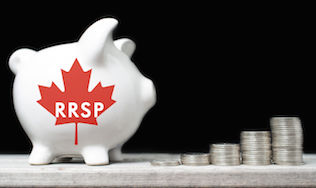

Canadians have been contributing less to their registered retirement savings plans so far this year, according to a new survey by BMO Financial Corp.
Its annual survey found that while 47 per cent of respondents have already contributed or plan to do so before the March 1 deadline, 36 per cent aren’t planning to make a contribution to their RRSP this year. While the percentage of contributors is in line with last year’s survey, for those who have already contributed, the average amount is $4,616, a drop of $472 from last year.
Read: Two-thirds of Canadian households saving for retirement, census suggests
As for why Canadians aren’t contributing, 40 per cent of respondents said they don’t have enough money to make a contribution. Another 23 per cent said they have more important expenditures and eight per cent said other investment options take precedent. “Competing financial demands often make it difficult to put money aside for retirement,” said Robert Armstrong, vice-president of multi-asset solutions at BMO Global Asset Management, in a news release.
The top reasons Canadians are prioritizing retirement savings this year are receiving a tax refund (44 per cent), having enough to get by in retirement (42 per cent) and having enough to reach their ideal retirement lifestyle (38 per cent).
Across Canada, Albertans have contributed the most to their RRSPs so far this year, at $5,570 on average, while the Atlantic region has contributed the least, at $2,908 on average, according to the survey. Meanwhile, savers in the Prairies are the most likely (52 per cent) to contribute to their RRSP before the annual deadline.
The latest survey follows a U.S. report last week that found Americans’ retirement prospects are on an upswing. The Fidelity Investments survey showed the typical American saver is on pace to save 80 per cent of the income needed to cover retirement costs. The percentage is the highest since the firm’s surveys began in 2005, when it was 62 per cent. The typical savings rate is now 8.8 per cent, which is more than double the 3.6 per cent figure in 2006.
Read: U.S. retirement savings in best shape in more than a decade
Given the flurry of numbers and even the current worries about the stock markets, how are Canadians doing on retirement readiness? Are coming changes to public pension plans and a renewed focus on savings and debt reduction having a positive impact or does the survey data — along with factors such as the decline in defined benefit pension plans, uncertainty about investment returns and low participation rates — suggest a continuing gap in retirement readiness in Canada? Have your say in Benefits Canada‘s weekly online poll.
Last week’s poll question asked whether it’s time to allow annuities in tax-free savings accounts. The majority (61 per cent) of respondents said flexibility around TFSAs for older Canadians would be helpful. The remaining 39 per cent of participants said the government should keep the focus of TFSAs as a liquid savings vehicle.
Read: Have your say: Is it time to allow annuities in TFSAs?

